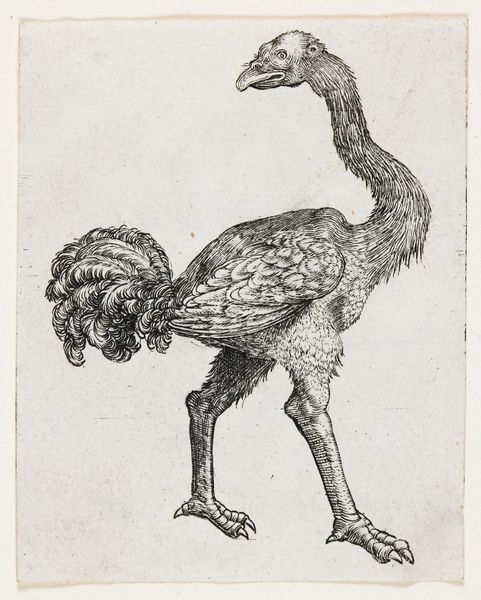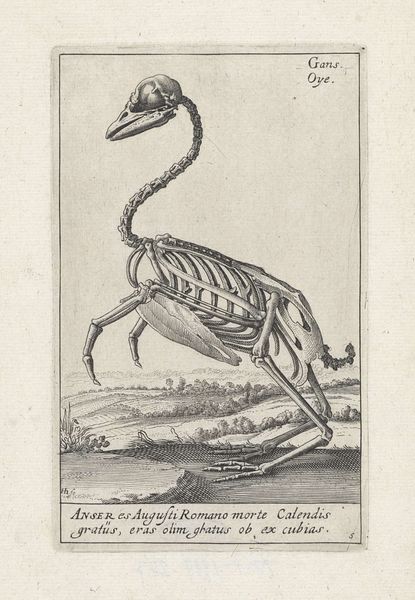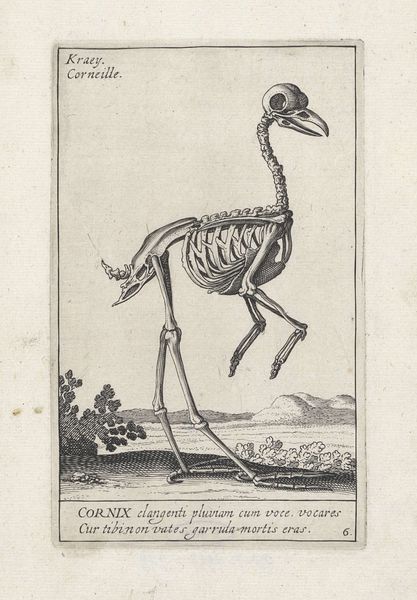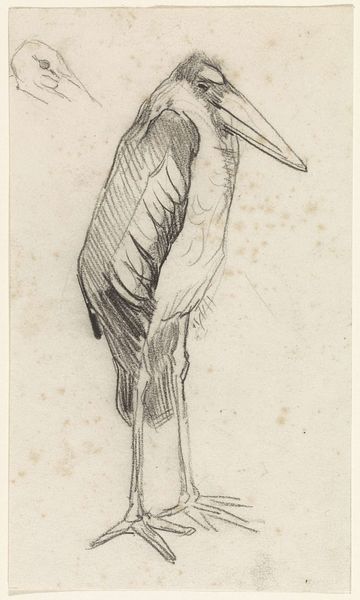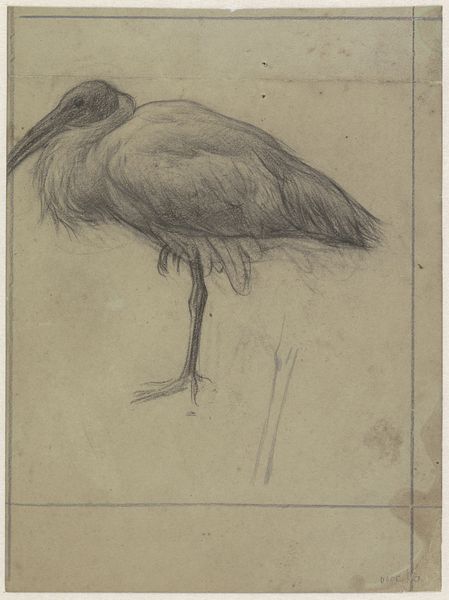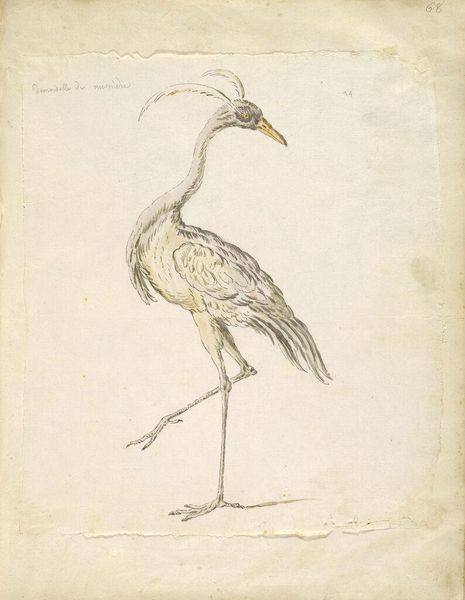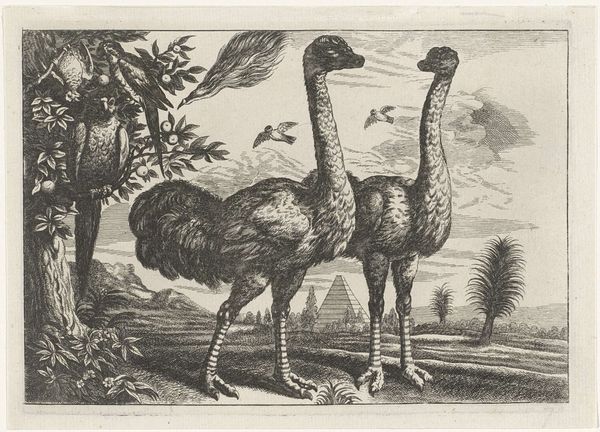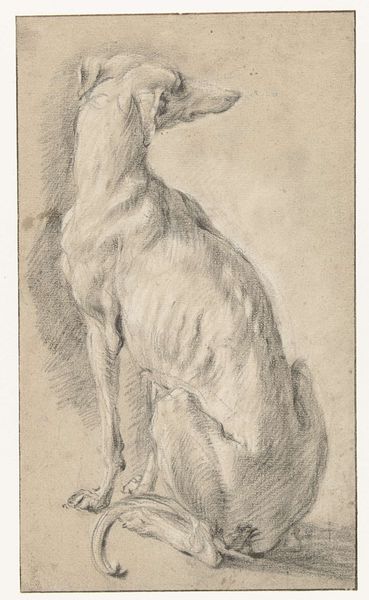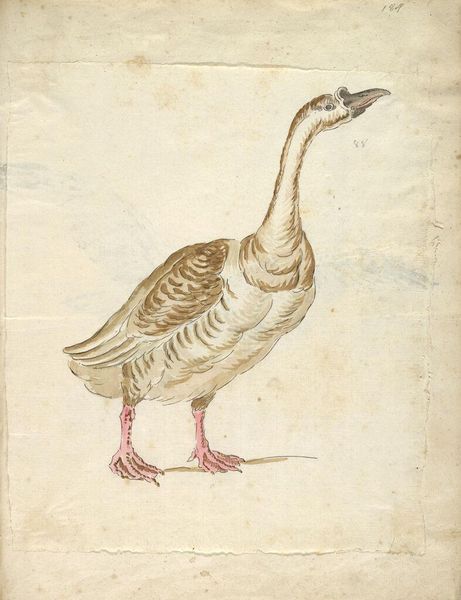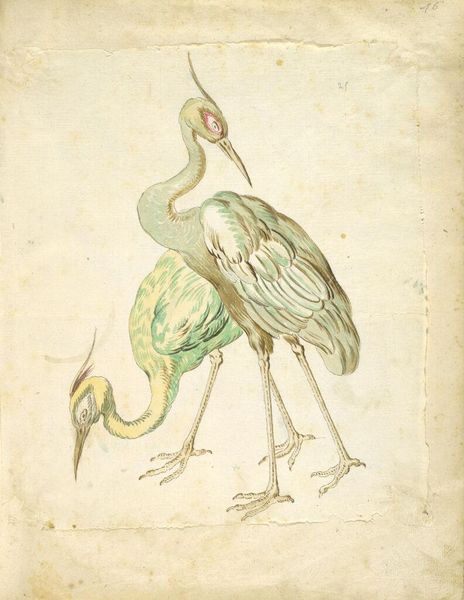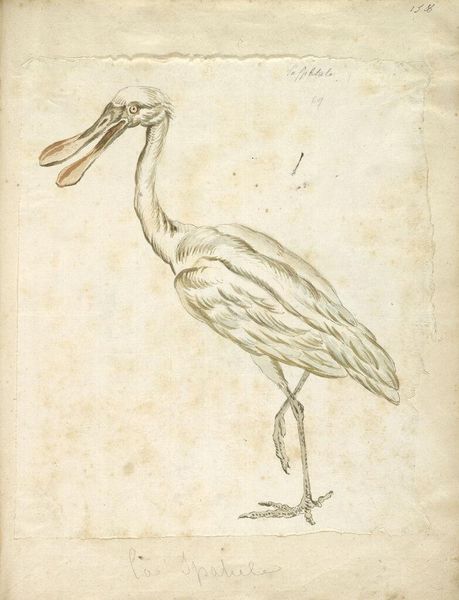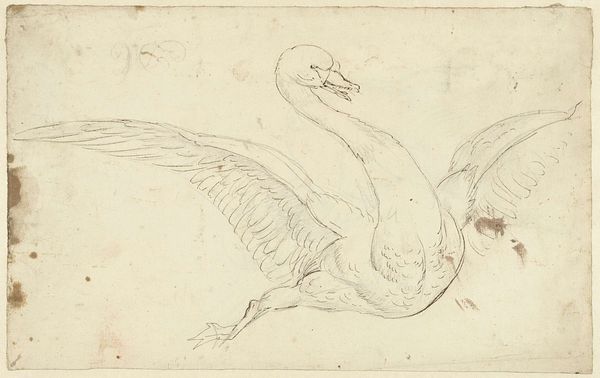
drawing, dry-media, pencil
#
pencil drawn
#
drawing
#
dry-media
#
pencil
#
academic-art
Copyright: Public Domain: Artvee
Editor: So, here we have "Fowl, Lateral View, with Skin and Underlying Fascial Layers Removed" by George Stubbs, created sometime between 1795 and 1806. It's a pencil drawing, and frankly, it's a little unsettling. What do you make of it? Curator: This isn't just a drawing, it's a deconstruction. Consider what "fowl" represents – often abundance, nourishment, life. But stripped bare like this, we're confronted with mortality. What emotions does the exposed anatomy evoke in you? Editor: Definitely a sense of vulnerability. It’s scientific, almost cold, yet the detail gives it an undeniable beauty. But what about the cultural implications? Was Stubbs trying to say something specific with this image? Curator: Precisely. Think about the Enlightenment, when Stubbs was working. There was an obsession with reason and scientific classification. Dissecting the fowl is like dissecting the natural order. Do you see echoes of earlier symbols in this image? Editor: Maybe… the "Dance of Death" motif? Showing what lies beneath the surface of life? The starkness seems to invite such thoughts. Curator: Good. Also, notice the absence of a background, or a suggestion of death. How does it reframe the message? The exposed musculature is undeniably rendered beautifully. Why would he emphasize the art instead of the violence of its reduction to pure anatomy? Editor: Perhaps he sought to reclaim a sense of dignity in something so clinical, restoring its essence. The skeletal reality remains, though… interesting to consider, really. Curator: Indeed. We are confronted not only by a specific being, but by our shared physiology. Editor: This makes me see beyond the surface of Stubbs' artistic precision into the deep layers of mortality and shared essence, so thank you.
Comments
No comments
Be the first to comment and join the conversation on the ultimate creative platform.
